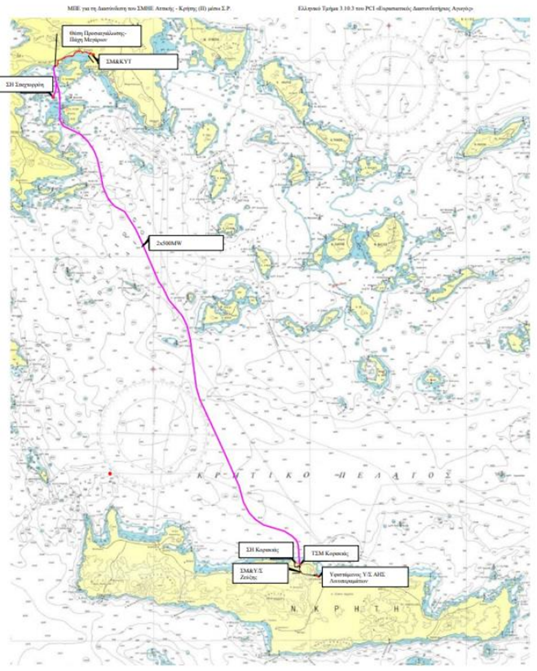The first stage of an EU-funded high-voltage electricity connection is being constructed between the Attica region, in mainland Greece, and the island of Crete. This will ensure security of energy supply for Crete, help to exploit the island’s renewable energy potential and reduce greenhouse gas emissions.
Electricity connection between Attica and Crete, Greece, to ensure security of energy supply
- 02 December 2024
Crete lacks electricity interconnections with other regions, which jeopardises security of supply. Electricity generation, largely by heavy fuel oil or diesel, is responsible for about 60 % of CO2 emissions in Crete. High international oil prices and the decommissioning of several of the island’s generation units have made the new connection necessary.
A reliable system
The project includes the construction of two converter stations: one at the Koumoundouros substation in Attica and another in Damasta, Crete. These converter stations will be linked by two underground/undersea cables, each some 380 km long.
The Koumoundouros station will convert 400-kilovolt (kV) AC into 500 kV DC. The Damasta station will convert 500 kV DC into 150 kV AC for use in the Crete grid. Both stations will ensure uninterrupted power supply and allow for restarting of the power supply in case of a blackout.
A new 150 kV AC substation will connect the Damasta station to Crete’s transmission system. Parts of the two overhead transmission lines will be upgraded and placed underground to connect the AC substation to the existing Linoperamata substation.
Fibre optic cables and two control buildings – one at each end of the cable – will allow for monitoring of the system and ensure it keeps operating in case of a fault in one of the main cables.
Green electricity, low bills
The project complements the connection between Crete and the Peloponnese region, completed in 2021. Together, the two connections will meet Crete’s expected energy needs until 2043. By integrating the electricity systems of Crete and mainland Greece, they will enable the introduction of a wholesale electricity market to Crete, lowering the cost of electricity and enhancing security of supply. This should support economic development, including in tourism, which accounts for nearly half of Crete’s GDP.
Additional benefits include enabling further exploitation of Crete’s renewable energy potential and reducing burning of fossil fuels and greenhouse gas emissions. During 2025, its first year of operation, the connection is forecast to reduce CO2 emissions by more than 400 000 tonnes.
The project will lower the tariffs Greek electricity consumers pay to cover high generation costs on islands that are not part of the main grid. Crete accounts for over half of these charges, which amount to around EUR 600 million a year. In 2025, the connection is expected to help lower the charges by nearly EUR 250 million.
Total investment and EU funding
Total investment for the project “HVDC Crete-Attica interconnection 2×500 MW – 1st stage” is EUR 1 467 957 100, with the EU’s European Regional Development Fund contributing EUR 250 619 036 through the “Transport Infrastructure, Environment and Sustainable Development” Operational Programme of the 2014-2020 programming period. The investment falls under the priority “Implementation of strategies for achieving low carbon emissions with a focus on urban areas”.

